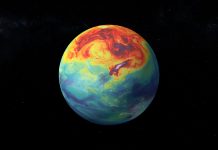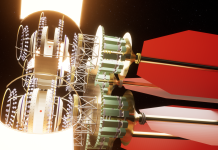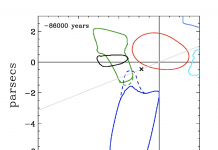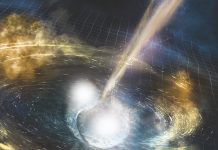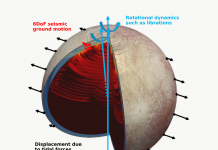Open Access Government produces compelling and informative news, publications, eBooks, and academic research articles for the public and private sector looking at health, diseases & conditions, workplace, research & innovation, digital transformation, government policy, environment, agriculture, energy, transport and more.
Home 2025
Archives
MaQuIS: Pioneering quantum space exploration to unlock Mars’ interior and atmosphere
B.C. (Bart) Root, an Assistant Professor at Delft University of Technology, discusses pioneering efforts in quantum space exploration aimed at unlocking the secrets of Mars’ interior and atmosphere.
Driving innovation in lunar water purification technology
Learn about how the UK Space Agency’s International Bilateral Fund (IBF) supported the UK-Canada Aqualunar Challenge to promote advancements in lunar water purification technology.
A new era of Lunar exploration: Canada is heading to the Moon
With Canadian astronaut Jeremy Hansen leading the way, Canada is heading to the Moon with humans and robots, as explained by Dr. Gordon Osinski from Western University.
Tiny dust particles in space are the seeds of life
Dr Stefan Reissl and Prof Dr Ralf S. Klessen introduce tiny dust particles in space, the seeds of life, in this intriguing field of astronomy research.
Predictive modelling of galactic star and planet formation
This article details advancements in our understanding of star and planet formation within galaxies, emphasising the transition from steady-state models to recognising the dynamic nature of the interstellar medium (ISM) in these processes.
Advancing space robotics: AI-driven innovation for lunar exploration and orbital operations
Dr. Sean Kalaycioglu, Toronto Metropolitan University Researcher and AIMechatroniX Inc. President, explores advancing AI-enabled space robotics for lunar exploration and orbital operations.
How did the first stars form in space?
Ralf Klessen, professor of theoretical astrophysics at Heidelberg University, investigates the physical processes that governed the formation of the first generation of stars in the early Universe.
No safe haven: Why business leaders must act now to address Earth’s polycrisis
As hurricanes devastate former climate havens, learn why business leaders must embrace Sustainable Strategic Management to address Earth’s polycrisis before it’s too late.
Large-scale data fusion in astronomy
Peter Melchior, Assistant Professor of Statistical Astronomy from Princeton University, provides a compelling analysis of large-scale data fusion in astronomy.
Fusion propulsion for exploring the solar system and beyond
Dr Kelvin F Long, Aerospace Engineer and Astrophysicist, leads the Interstellar Research Centre, a division of Stellar Engines Ltd. He argues that fusion propulsion will enable the full exploration of the solar system and beyond.
Astrophysical and planetary sciences: Exploring the local interstellar medium and the next space frontier
Prof Jeffrey L Linsky from the University of Colorado Boulder, sheds light on exploring the next space frontier in this exciting astrophysical and planetary sciences focus.
What remains when two neutron stars collide?
Distinguished Professor Susan M. Scott and Dr Karl Wette from the Australian National University examine what remains when two neutron stars collide in this exciting gravitational astrophysics focus.
Emergent dimensionality: Exploring all possible (and unobservable) extra dimensions
Dr Szymon Łukaszyk, Łukaszyk Patent Attorneys, explains emergent dimensionality, exotic R4, ‘life as the explanation of the measurement problem’, and personal motivations.
Pioneers project: Looking inside planetary interiors
PIONEERS European project develops the next generation of instruments that will reveal planetary interiors, explains Professor Raphael F. Garcia from ISAE-SUPAERO.
Space exploration in schools: COSPAR’s Panel on Education is helping to prepare tomorrow’s space...
COSPAR's dedicated Panel supports today's science teachers for tomorrow's space exploration.

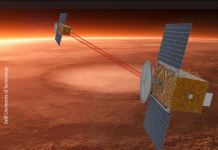

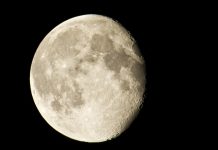
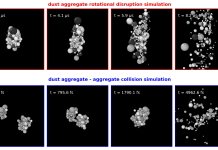
![Predictive modelling of galactic star and planet formation Figure 1 - The figure illustrates the diversity and multi-scale nature of the structures in the Galaxy. The first two lines are real astronomical images, which go from the galactic disk itself and down to the planet-forming disks. The last two lines are generated from numerical simulations and aim to understand and interpret the observations. [adapted from Facchini et al. 2025, Göller et al. 2025, Hennebelle et al. 2022, Lebreuilly et al. 2024, Molinari et al. 2016, 2025, Reissl et al. 2016]](https://www.openaccessgovernment.org/wp-content/uploads/2025/08/figure-218x150.png)
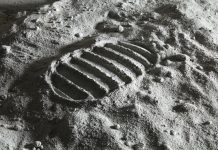
![How did the first stars form in space? Figure 1: Sketch of the evolution of the Universe over the last 13.77 billion years. It started with the Big Bang, followed by an extremely short period of rapid exponential expansion. The furthest we can see is the cosmic microwave background, when radiation decoupled from matter, approximately 380,000 years after the Big Bang. This is followed by the ‘dark ages,’ during which this radiation redshifted from the visible regime into infrared and sub-mm wavelengths. The occurrence of the first stars, about 400 million years after the Big Bang, ended this phase, spearheading the formation of galaxies as we see them today. [Credit: NASA/WMAP Science Team, public domain]](https://www.openaccessgovernment.org/wp-content/uploads/2025/05/Fig-1_1200-218x150.jpg)
